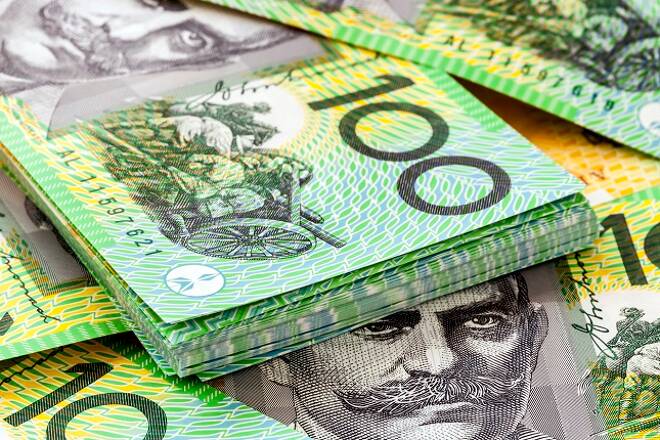Advertisement
Advertisement
AUD/USD Forex Technical Analysis – Strong Downside Momentum as Aussie Nears Long-Term Target at .6008
By:
A series of rate cuts or even quantitative easing from the RBA, combined with the increasing possibility of a global recession, should keep a cap on gains, and could fuel further weakness.
The Australian Dollar closed sharply lower last week as global equity markets went into a freefall last week as the ever-spreading coronavirus sparked fears of a potential global recession. The move encourage investors to raise the chances of a rate cut by the Reserve Bank of Australia on Tuesday. The move by the RBA may be necessary to soften the impact of the decline.
Last week, the AUD/USD settled at .6506, down 0.0121 or -1.83%.
Policymakers will meet on Tuesday, a day ahead of the release of the latest quarterly economic growth figures, which economists expect will again show a sluggish expansion, even before the outbreak of COVID-19.
According to the latest money market data, the RBA will reduce the cash rate to a fresh record low of 0.5%. Early last week, the money markets were saying there was virtually no chance of a rate cut, but all of that changed during last week’s rout of the U.S. equity markets.
Monthly Technical Analysis
With the AUD/USD hitting its lowest level in 11 years last week, the best chart to watch at this time or until the Forex pair forms a support base on the daily chart is the longer-term monthly chart.
The monthly chart indicates momentum is clearly to the downside. If the momentum continues then look for sellers to make a run at the October 2008 main bottom at .6008.
A series of rate cuts or even quantitative easing from the RBA, combined with the increasing possibility of a global recession, should keep a cap on gains, and could fuel further weakness.
About the Author
James Hyerczykauthor
James Hyerczyk is a U.S. based seasoned technical analyst and educator with over 40 years of experience in market analysis and trading, specializing in chart patterns and price movement. He is the author of two books on technical analysis and has a background in both futures and stock markets.
Advertisement
